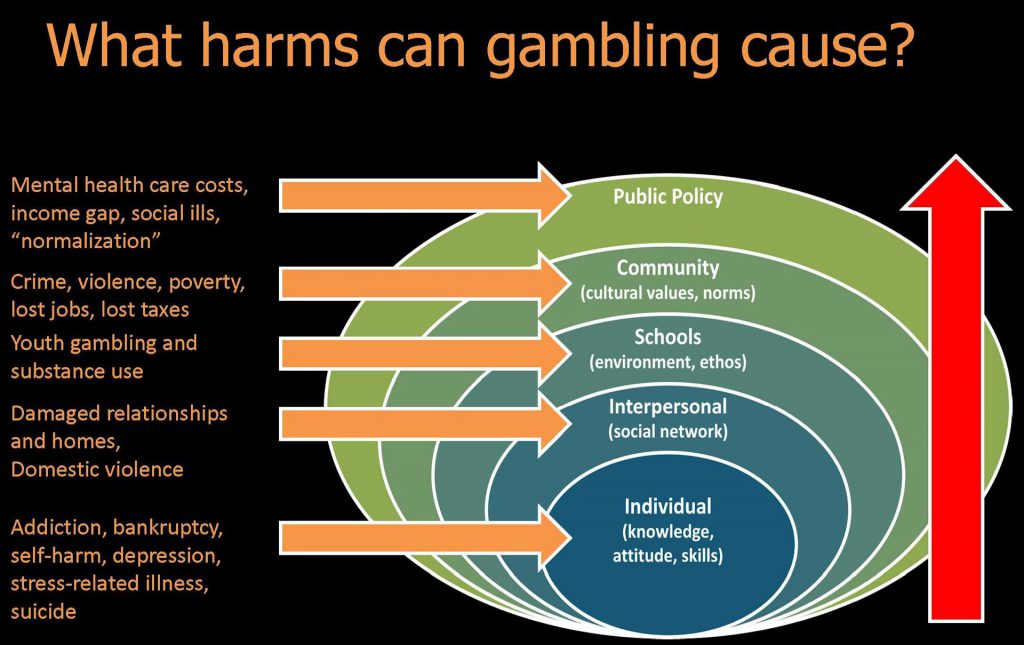Gambling affects college students in a major way. Roughly 39-percent of female students have claimed that they have gambled in some capacity recently. Impacts a Player's Future When students get. Effects of expertise on football betting Article (PDF Available) in Substance Abuse Treatment Prevention and Policy 7(1):18 May 2012 with 1,944 Reads How we measure 'reads'.
The College Gamer. Recent data from UCLA’s Higher Education Research Institute provides useful information about video game usage on college campuses. The data show that most college students have played video games, many play them regularly, and a small percentage use them as a primary means of entertainment and leisure. Apr 26, 2019 Adderall and Gambling on College Campuses. Adderall misuse and gambling addiction are a major problem on college campuses. Only marijuana is used more often than Adderall by college students. Students believe Adderall to be a safe performance drug, though there is not much actual evidence supporting that claim. Internet gambling is a growing trend among teens and college students and poses unforeseen risks. Here are some of the recent statistics for the growing population of. The research in this study examined the nature of college student gambling (N=201) and whether general gaming education can influence meaningful changes in college students’ gambling attitudes, behaviors, and perceptions. A group of college students from the University of Massachusetts Amherst, Casino Management class, received general gaming.
Last updated: 08/5/2019
Author: Addictions.com Medical Review
Reading Time: 3minutes
Even without the physical triggers so commonly associated with drug addiction, gambling disorders can wreak just as much havoc in a person’s life. While drug addiction works as a substance-based disorder, gambling addictions have more to do with a lack of impulse control.
Gambling addiction often affects people who also struggle with alcohol abuse.
This gold nugget was found in Australia and is now on display in downtown Las Vegas. That’s 987 ounces of gold in this one nugget. The Hand of Faith (which actually looks like a hand) weighs in at 61 pounds and 11 ounces. Imagine what it’s worth at today’s gold prices. Texas gold nugget casino ship. In the heart of Downtown Las Vegas the most well appointed casino you will find is the Golden Nugget.
Ultimately, it’s the loss of control that defines addictive behavior regardless of the substance or activity involved. Gambling addiction statistics present this “loss of control” factor in a stark and alarming light.
Gambling addiction statistics show how problem gambling can up-end a person’s life in more ways than one. Not unlike other types of addiction, people most susceptible to gambling also suffer from other disorders of which they may or may not be aware.
Probably the most glaring revelation to be had from gambling addiction statistics lies in the consequences that result when gambling disorders go untreated.

Effects Of Gaming On College Students
1. Gambling Trends

As with all types of data, certain trends or patterns of behavior start to surface within a given population. Gambling addiction statistics are no different. Some of the more prevalent gambling trends show:
- The likelihood of developing a gambling addiction increases 23-fold for people affected by alcohol use disorders
- Over 80 percent of American adults gamble on a yearly basis
- Three to five gamblers out of every hundred struggles with a gambling problem
- As many as 750,000 young people, ages 14 to 21 have a gambling addiction
2. Gambling & Criminal Activity
As far as gambling and criminal activity goes, gambling addiction statistics reveal a direct correlation between the severity of a gambling addiction and the likelihood of committing crimes. Rates of gambling addiction for criminal offenders far exceed rates found among non-offenders. On average, an estimated 50 percent of those affected by gambling problems commit crimes in order to support their addiction.
3. College Gambling
Gambling addiction statistics show people between the ages 20 and 30 have the highest rates of problem gambling.
- 75 percent of college students report having gambled during the past year
- The risk of developing a gambling addiction more than doubles for young adults in college settings
- An estimated six percent of American college students struggle with gambling problems
4. Gambling & PTSD Trends
People affected by post-traumatic stress disorder or PTSD live with high levels of stress and anxiety on a daily basis. Gambling addiction statistics show high rates of gambling addiction among PTSD sufferers.
- PTSD symptoms affect anywhere from 12.5 to 29 percent of problem gamblers
- 34 percent of those who seek treatment for gambling addiction exhibit symptoms of PTSD
Gambling Among College Students
5. Gambling & Mental Illness
As addictions, in general, alter brain chemical functions in destructive ways, people struggling with gambling addiction have a higher likelihood of developing mental disorders. Gambling addiction statistics show a high incidence of certain types of mental illness, some of which include:
- Depression disorders
- Anxiety disorders
- Substance abuse disorders
- Anti-social personality disorder
As with any other type of addiction, a gambling addiction can only get worse when left untreated.